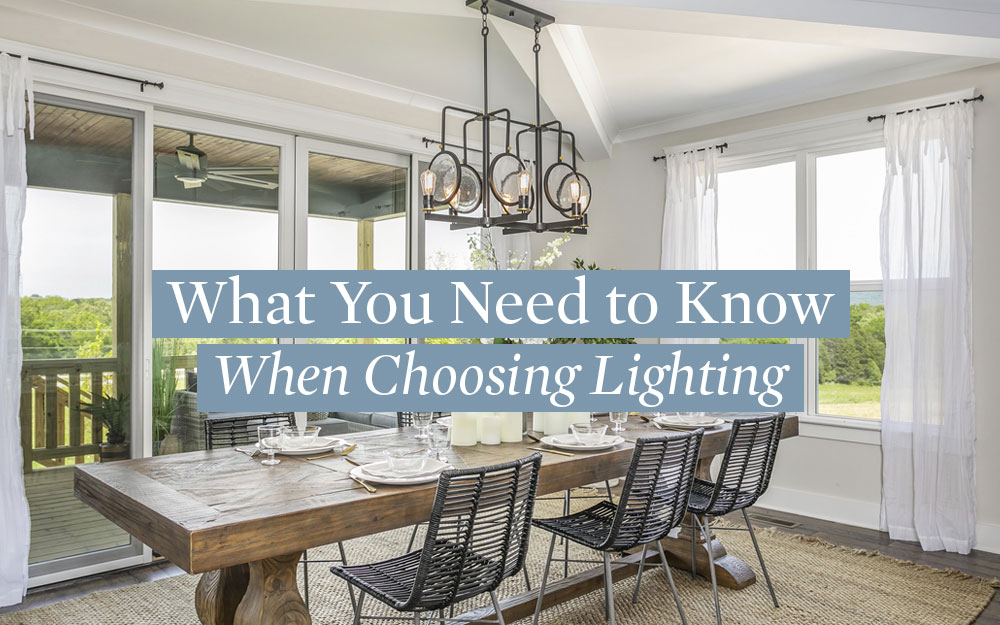What You Need to Know When Choosing Lighting
Written by Progress Lighting on March 12, 2020

It's exciting to plan a remodel or build a completely new home! But the number of decisions to be made on the materials, fixtures and appliances can be somewhat overwhelming. And that's why some people leave items on their to-do list, such as choosing the lighting, to the last minute. Here's what you need to know when choosing lighting for your home.
It's essential to consider the lighting plan in the initial budget and design phase of the project to ensure you get the functionality, the designer look and the ambiance that you desire. Once the building or remodeling has started, it may be too late, and it will be more expensive to make changes during the construction process.
As always, we like to consult our expert partners in the field to bring you the latest and greatest advice. We talked to Piper Stromatt, designer and partner of Curate Custom Homes in Chattanooga, TN, about the key points she makes when discussing lighting with her clients. Here are some of her tips.
- Layered lighting is a must-have. Combine functional fixtures that provide task lighting with decorative lighting that provides ambiance to creates comfort, beauty and style in a room.
- Ask about the wiring plan, especially in a new build. Pre-installed junction boxes, or pancake boxes, offer less flexibility as the light fixture must installed wherever the junction box is. If possible, ask for the home to be snake-wired, which gives the flexibility to add lighting wherever and whenever you want.
- Think about LED lighting. Some lighting fixtures have the LED bulbs integrated directly into the fixture; other fixtures can have LED bulbs screwed into them. Even if it adds to the cost, the investment to substitute LED bulbs is worth it for the advantages of energy savings, brighter light, and longer bulb life.
- Install decorative lighting along with functional ceiling lighting. It provides elements of decor that reinforce the home's unique design. Decorative lighting also defines a space, which is especially crucial in an open floor plan: select statement fixtures as a single focal point for each of the living areas.
- Keep in mind that recessed lighting does not work everywhere in a home. Avoid installing them in rooms where flattering and comfortable light is necessary, such as in the master bedroom or a nursery. Add statement lighting to supplement downlights.
"For the style impact it gives the home, adding decorative lighting is definitely worth the investment," says Piper. "We've tested recessed-only lighting schemes in homes, and our clients immediately sense that something is lacking in the home's ambiance and design. We always recommend including decorative lighting as it increases the perceived value of the home as well as offering the perfect finishing touch."
Planning your lighting at the beginning of the design process is one less decision to make once construction is underway. You'll have peace of mind knowing you've chosen lighting that will give your new home or remodeling project the best combination of decorative and functional fixtures that beautifully expresses your personal design style.
Progress has lighting fixtures that suit any budget and lifestyle trend you desire for your new or remodeled home. We're here to help!